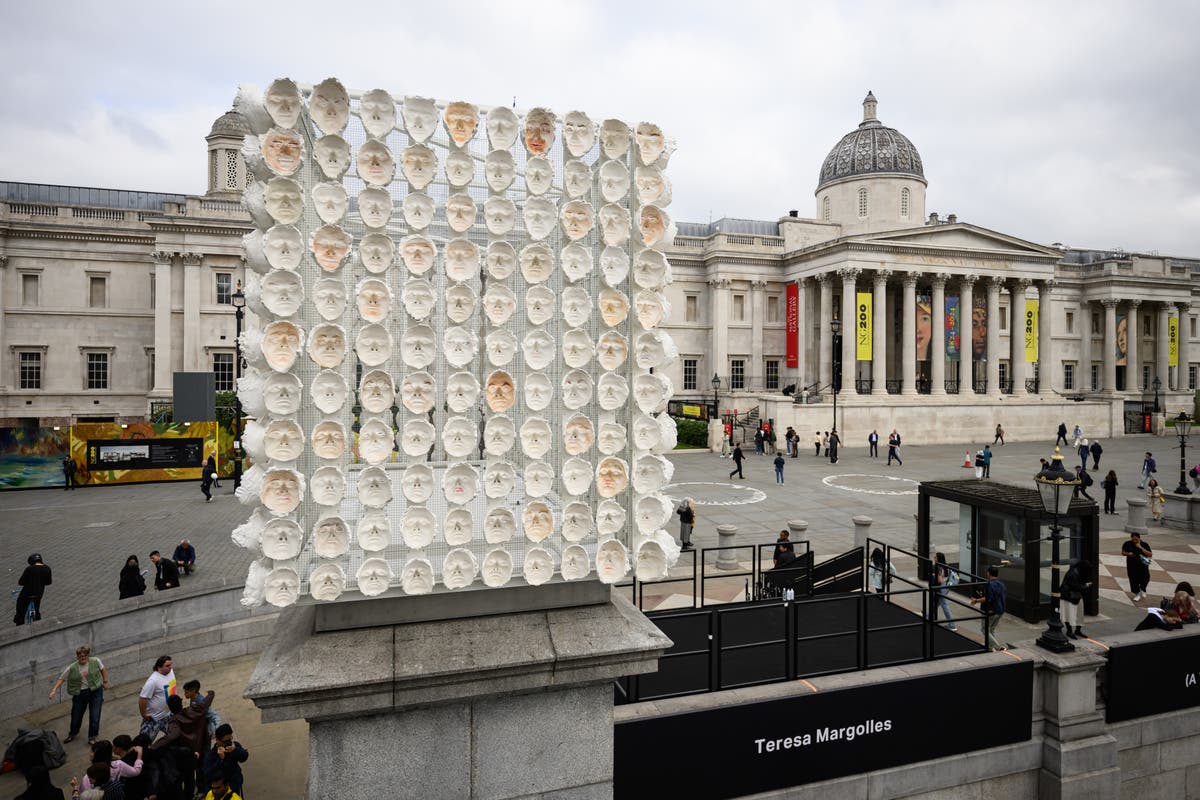Trafalgar Square’s fourth plinth will tell the stories of trans and gender variant people through a new art installation featuring 726 face masks. Created by Mexican artist Teresa Margolles , 63, the plaster cast masks come with unique names and features and are intended to slowly deteriorate with the elements over the next two years. Ms Margolles said she wanted to highlight a community that typically tries to blend in with the larger cisgender population through subtle features such as the inclusion of lipstick and, in one instance, half an eyebrow.
“We are giving faces to them all,” she said of the work, which was also designed to be a collective artistic hug for murdered trans singer and retired sex worker Karla La Borrada, who lost her life at the age of 67 in 2016. The subject of death is of key importance to Ms Margolles’s work, which has previously made use of bodily fluids from a deceased person. Ms Margolles is herself a former forensic pathologist.

She decided to use her interest in the subject to honour Ms La Borrada, with whom she struck up a friendship while working on a photographic project. “Instead of doing one piece in her memory, I wanted to do something to represent the whole trans community – a collective piece about that community hugging her,” the artist told The Guardian . “Karla was the pillar of the community.
And on 22 December 2015, she was murdered,” she added. Nobody was ever charged with the murder. Featuring masks cast from living trans and gender variant people all over the world, including the UK, the piece has been described as a protest against the violence those in the community can face.
The fourth plinth in Tafalgar Square was initially intended to be home to a statue of William IV when it was built in 1841 but the equestrian statue never materialised because of a lack of funding. What followed was a century and a half of debate before it was decided that the plinth should host a series of temporary art exhibitions in 1998. Explaining why the installation does not feature the outside of the masks, Ms Margoelles said: “They will fade and transform.
It’s a natural process. “What interests me, and the reason why I’m not displaying the outside of the casts, is because it would be breaking the soul of it, which is the face of the person. Like this, each cast will react to the elements in its own way, according to the organic materials left on the mask.
” The masks will be displayed on the fourth plinth until 2026 when they will be replaced by New York-born artist Tschabalala Self’s Lady In Blue sculpture, inspired by a modern “everywoman”. This will be followed up in 2028 by Romanian artist Andra Ursuta’s piece, Untitled, which features a hollow, shrouded horse and is designed to open up a conversation about art in public places. “My work deals with history; history makes sense of us as we try to make sense of it,” she said.
“Trafalgar Square is a place where multiple histories face one another in an open-ended standoff. It will never be finished. This is such a crucial, and beautiful, accident.
”.




















